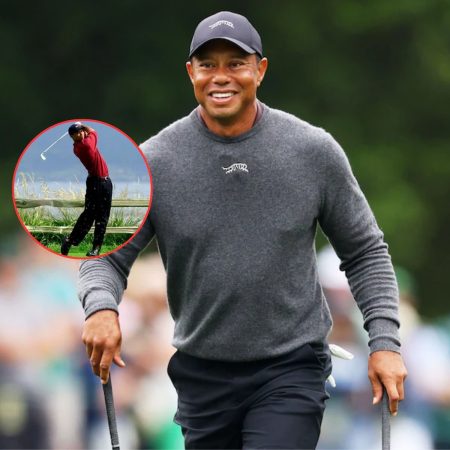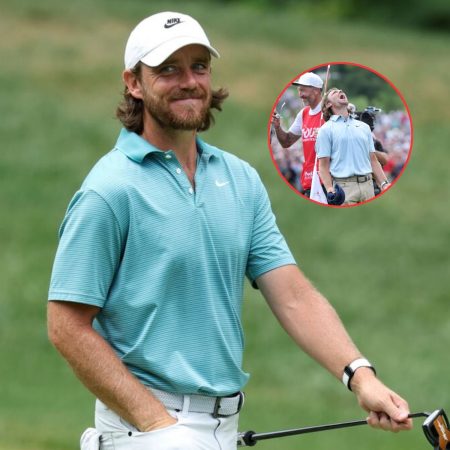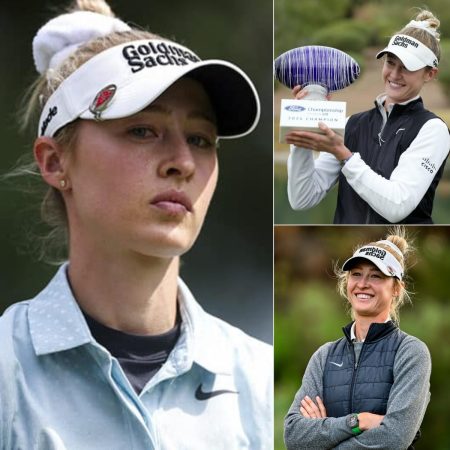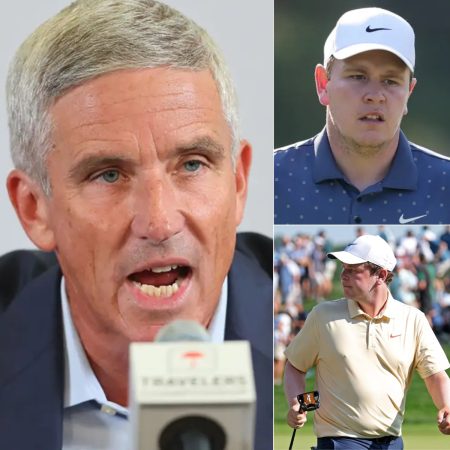The PGA Tour are set to make a big change

The PGA Tour is set to trial the use of rangefinders in a bid to speed up play, following Rory McIlroy’s first Masters win. Despite a shaky start at the Masters, which some critics labelled as an “inexcusable” mistake, McIlroy managed to secure his first Green Jacket after a tense playoff with Justin Rose.
The 35-year-old also joined an elite group, becoming only the sixth player to complete the career Grand Slam, and the first since Tiger Woods in 2000.
Golf Channel analyst Paul McGinley suggested that McIlroy’s initial struggle could be attributed to his playing partner Akshay Bhatia taking too long over his shots, thereby throwing McIlroy off his game. “I think he got distracted,” McGinley commented.
“It took him a long time to play that pitch shot. His playing partner Akshay Bhatia put his second in the water. He took ages to play his shot – he took about 10 practice swings.
“He is such a quick player – he wants to get on with hit. He got distracted. I don’t blame Bhatia or the players walking off 16. For a player who likes to play quickly, it was a drop in concentration. And that is what great champions don’t do. And I am sure that the 17th was a legacy of it.
The Tour has announced that players will be permitted to use rangefinders on the “distance-only” setting during games, a decision first revealed at the Players Championship. This new rule will come into effect at the RBC Heritage and Corales Puntacana events, and will conclude with the Truist Championship and Oneflight Myrtle Beach Classic, according to Golf Digest.
However, any player caught using features other than the “distance-only” mode will face penalties. The first offence will result in a two-stroke penalty, while a second offence will lead to automatic disqualification from the tournament.
When asked about potential solutions to improve the pace of play before Pebble Beach, Northern Irish golf star McIlroy confessed he had “no idea”. He commented on the increasing difficulty of courses, citing Torrey Pines as an example, and noted the challenges posed by wind speeds and green speeds.

He admitted that slow play has always been an issue in golf, but couldn’t provide a definitive solution. He suggested smaller fields could help, but acknowledged this would reduce playing opportunities and potentially upset some people.
“The other thing is when we play in this time of the year, the tee times have to be a little bit tighter together so that they can get everyone through with daylight and everything. If you could be able to space the tee times out a little bit more, that would hopefully make things flow a little bit better.
“Nowadays, most people go for par 5s in two, so you’ve got to wait on that. You’ve got longer par 3s.
“There’s a lot of different things that go into it. I don’t know.
“It seems like it’s – you can maybe improve it by 15 or 20 minutes, but that’s still a five-and-a-half hour round into a five-hour and 15 round, so is that really improving it enough to make a huge change? I don’t know.”





